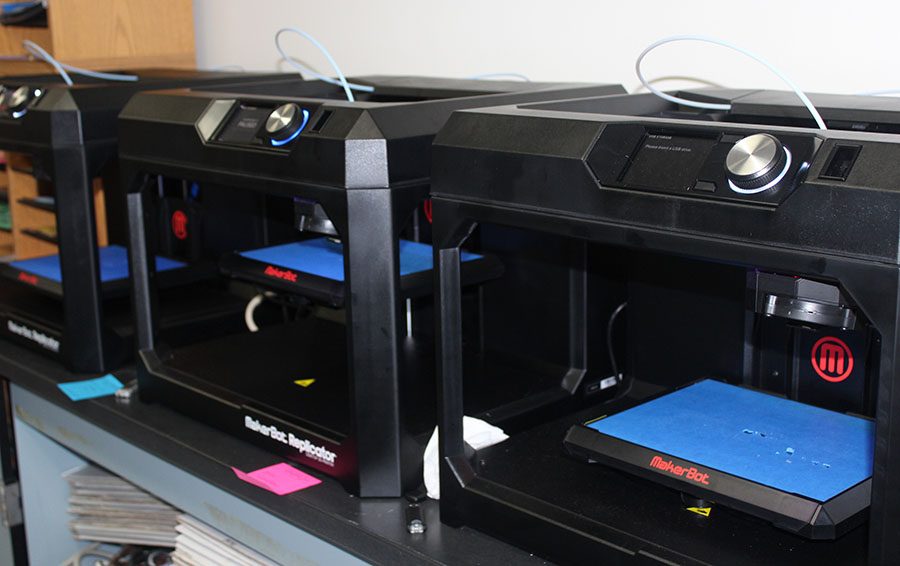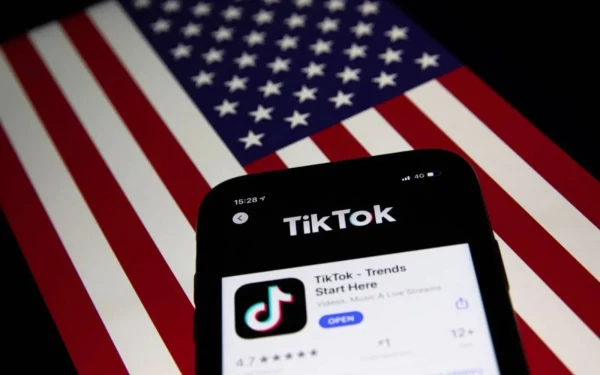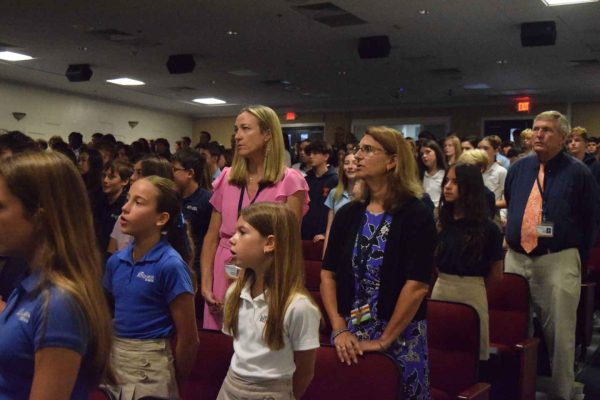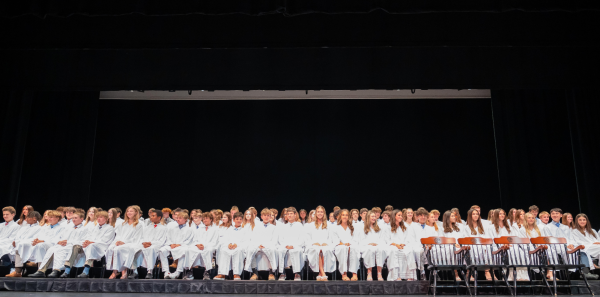3D Printers Arrive at the Middle School
The three MakerBots line the wall of Ms. St. Martin’s back room.
The future has arrived at The Benjamin School! Three new Makerbot Fifth Generation Replicators, otherwise know as 3D printers, now reside in the back room of Science Department Chair Ms. Gabriele St. Martin’s class. The printers’ output, which uses PLA (polylactic acid) filament that is similar in look and feel to plastic, ranges from a water molecule diagram to a Pikachu to an African elephant.
Eighth-grade science students have been allowed to print one thing from www.thingiverse.com, an open source 3D library of “things and gizmos” that provides various objects for students to print after they have slightly customized the object in terms of size, filament color, infill, and shells (the thickness of the object’s “walls”). After that, students must use more hands-on and challenging 3D editors such as 123 Design to create more sophisticated objects. Using the software is becoming easier for the students, but the hardware of the machine and how it actually works is another story.
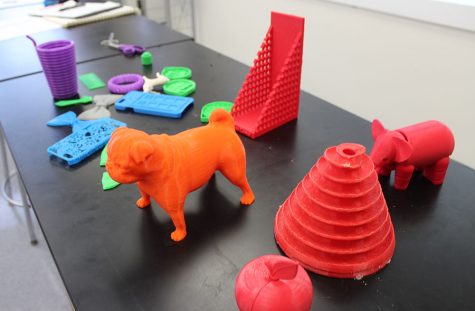
The table at the front of Ms. St. Martin’s classroom displays the various objects that have been printed thus far.
Unlike conventional printers, 3D printers do not add ink to a piece of blank paper, they actually use a polyester thermoplastic derived from renewable resources (such as corn starch) to print a three-dimensional object. The filament comes on a spool that pops into the machine, is then fed into a smart extruder (the nozzle that dispenses the filament), and, when the extruder heats the filament to 215 degrees Celsius, the machine begins to print based on the schematics loaded into the Makerbot via a USB device. To print, the machine moves the extruder slightly above the build plate, and it prints layer by layer of filament until the desired object is printed. The time for each print varies. The bigger an object, the more time it requires to print. The average print is roughly seven to eight hours. Eighth grader Hudson Hale even printed a replica of a pug, a job which took 25 hours to complete. “I found the pug on Thingiverse, but I strived to change it,” said Hale. “I used the Makerbot app to change the resolution and the color. I printed the pug to have a reminder of my own pug at my house. The 3D printers are super fun!”
So aside from printing animals and Pokemon characters, how will the 3D printers enrich the middle school curriculum? “Using the software to design something…will be incorporated into regular science [classes] by preparing [the students] to learn about 3D printing software and development,” said St. Martin. “[They will begin ] with 123 Design and move up to Solidworks, which is a major business 3D software for many important companies.”
When asked about applying 3D printing to real-world applications, St. Martin said that if you were an airplane designer testing the efficiency of a new wing design, you might use a 3D printer to create a miniature airplane wing upon which to run tests.
The biggest challenge so far, according to St. Martin, is the waiting. St. Martin has a queue of flash drives on her desk loaded with various objects to print. The drives are labeled with a post-it that lists the file, the student’s name, and the filament color. St. Martin says that the 3D printers will soon evolve over the years to become faster and cheaper.
The Upper School has already had 3D printing technology for a couple of years. According to upper school science teacher Dr. Darryl Martino, the division has six Makerbot replicators and “all of the engineering courses have some CAD (computer-aided design) and printing assignments that teach the students how to use the printers.” However, Martino notes that the printers themselves are just output devices and that “the design software is the important part” because programs such as Tinkercad and 123 Design allow students to understand concepts spatially and mathematically while allowing them to explore their creativity.
